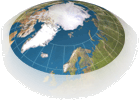 |
World
Council of Indigenous Peoples |
| |
In 1975,
the Nordic Saami Council and other indigenous groups held a
conference in Copenhagen for the final preparations of the World
Council of Indigenous Peoples (WCIP).[6]
A strategy, budget, and delegation of experts were
adopted at this time. Aslak
Nils Sara, an experienced Saami political activist was elected to
the delegation as a representative of Europe and Greenland. The
WCIP’s goal was established a formal relationship to the United
Nations and is seeking to have concepts of aboriginal rights
accepted internationally as basic economic and political rights of
indigenous peoples.” (Sanders, 1977, 6) It was one of the first
non-governmental organizations (NGOs) to receive consultative
status at the Economic and Social Council (ECOSOC) of the UN. The
WCIP proved to be a powerful force in indigenous politics until it
dissolved in 1996 for internal conflict. (Henriksen, 2002) Before
its dissolution, the WCIP accomplished two major functions. It
gave its members concrete experience in international politics and
it presented indigenous politics to the United Nations. |
| |
Saami have proven their merit at forming international
partnerships and motivating politics for indigenous rights. “The
Saami have formed alliances with other aboriginal peoples through
such organizations as the WCIP. Such initiatives have enabled the
Nordic Saami to have their rights as an aboriginal people
discussed in international fora.” (Sillanpää, 1994, 229) |
|
